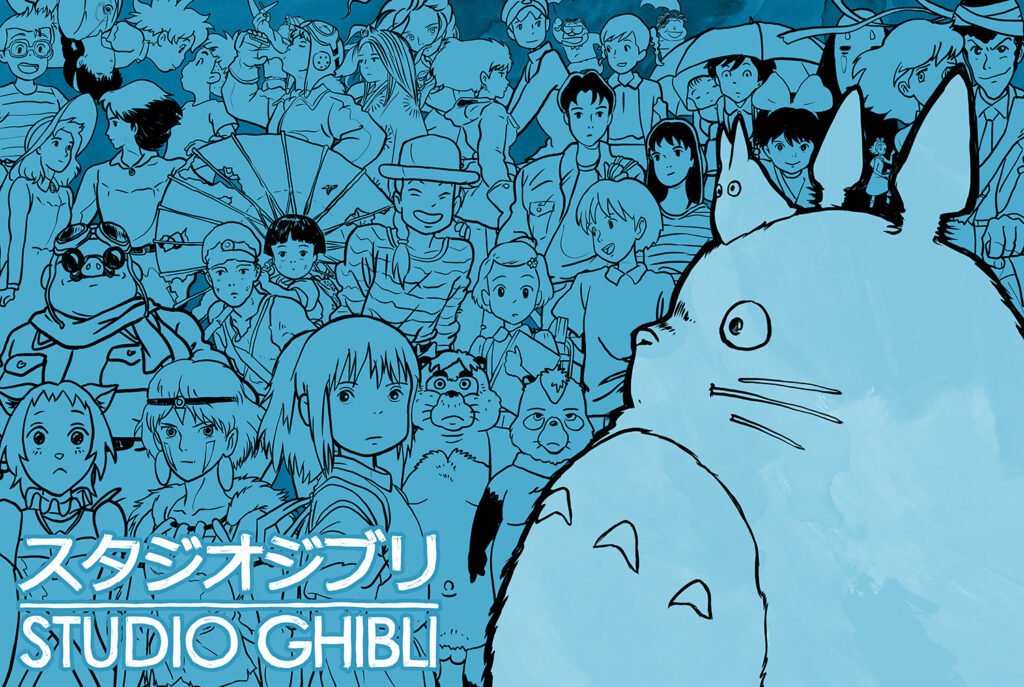
Studio Ghibli has become a symbol of excellence and creativity in the world of animation, both in Japan and globally. With its blend of breathtaking visuals, heartfelt storytelling, and timeless themes, the studio has cemented itself as the heartbeat of Japanese animation. Founded in 1985 by legendary filmmakers Hayao Miyazaki and Isao Takahata, Studio Ghibli has not only shaped the anime industry but also influenced the broader landscape of animated storytelling worldwide.
The Birth of a Cultural Icon
The creation of Studio Ghibli followed the success of Nausicaä of the Valley of the Wind (1984), a film directed by Hayao Miyazaki that captivated audiences with its powerful environmental themes and lush animation. The film’s success inspired Miyazaki and Takahata, along with producer Toshio Suzuki, to establish Studio Ghibli. Their mission was clear: to produce animated films that combined artistic excellence with profound emotional depth.
Hallmarks of Studio Ghibli’s Legacy
Over the decades, Studio Ghibli has produced a string of masterpieces that have defined its reputation. Each film showcases the studio’s commitment to storytelling, artistry, and innovation.
- My Neighbor Totoro (1988): This film introduced Totoro, an endearing forest spirit who became the studio’s mascot. Its themes of family, nature, and childhood wonder have made it a beloved classic.
- Princess Mononoke (1997): A groundbreaking epic that explores humanity’s relationship with nature, this film is a powerful statement on environmentalism and coexistence.
- Spirited Away (2001): This Academy Award-winning film is a coming-of-age story set in a magical realm. Its rich visuals and complex characters solidified Studio Ghibli as a global force.
- Howl’s Moving Castle (2004): A visually stunning tale of love, self-discovery, and resilience set against the backdrop of war and magic.
These films, among many others, highlight Studio Ghibli’s ability to craft stories that transcend language and culture, resonating with audiences of all ages.
Artistry Rooted in Tradition
Studio Ghibli is renowned for its hand-drawn animation, which remains a hallmark of its films. Unlike many studios that have embraced CGI as their primary medium, Ghibli stays committed to traditional animation techniques, emphasizing the importance of craftsmanship.
The attention to detail in every frame is unparalleled. From the intricate designs of fantastical creatures to the serene beauty of natural landscapes, Studio Ghibli’s artistry captures the essence of life in all its forms. These visual elements are often complemented by the evocative music of Joe Hisaishi, whose compositions have become inseparable from the Ghibli experience.
Themes That Resonate Across Generations
One of the reasons Studio Ghibli’s films remain timeless is their exploration of universal themes. The studio frequently delves into issues such as environmental preservation, the balance between tradition and progress, and the complexities of human relationships.
Its films also often feature strong female protagonists, such as Chihiro in Spirited Away, Nausicaä in Nausicaä of the Valley of the Wind, and San in Princess Mononoke. These characters embody courage, resilience, and compassion, challenging traditional gender roles and inspiring audiences around the world.
Global Recognition and Impact
Although deeply rooted in Japanese culture, Studio Ghibli’s films have a universal appeal. Its ability to convey profound emotions and tell compelling stories has made it a cultural phenomenon.
In 2014, the studio announced a brief hiatus following Hayao Miyazaki’s retirement. However, demand for its films never waned. Streaming services brought Ghibli’s works to new audiences, while the Ghibli Museum in Mitaka, Japan, became a pilgrimage site for fans.
In recent years, Studio Ghibli has resumed production, with Miyazaki returning to direct new projects, including the highly anticipated How Do You Live?
The Heartbeat of Japanese Animation
Studio Ghibli’s impact on Japanese animation is immeasurable. Its films have not only elevated anime as a respected art form but also demonstrated the power of animation to tell meaningful, universal stories. The studio’s influence can be seen in countless animators, filmmakers, and storytellers who draw inspiration from its works.
In a world where animation often prioritizes speed and efficiency, Studio Ghibli stands as a beacon of artistry, passion, and dedication. It reminds us that animation is not just entertainment—it’s a medium capable of touching hearts, sparking imaginations, and inspiring change.